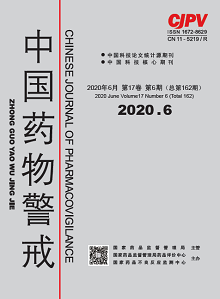|
|
Safe Use of Lopinavir/Ritonavir for COVID-19 Based on Literature Analysis of Adverse Reactions
CAI Jun, LI Huixin, LIU Mengying, YAO Yao, GE Weihong
2020, 17(6):
326-331.
DOI: 10.19803/j.1672-8629.2020.06.02
Objective To explore the clinical characteristics of adverse reactions induced by lopinavir/ritonavir so as to provide reference for its safe use in COVID-19 patients. Methods Literature related to adverse reactions induced by lopinavir/ritonavir published as of February 15, 2020 was retrieved from CNKI, VIP Chinese full-text database, Wanfang database, Pubmed and Embase, and analyzed statistically in terms of the basic information of patients, use of medicines, systems or organs involved, clinical symptoms, drug-drug interactions, treatment and outcomes. Results A total of 99 papers involving 120 cases were enrolled with an average age of (39.6±14.8) years, including 81 males and 39 females. 110 of these cases were AIDS patients and 10 were cases of post-exposure prophylaxis. The median onset time of adverse reactions was 1.0 (0.3 to 5.0) month, with 40 cases within 10 days of administration. Adverse reactions related to systems or organs at any time point occurred mainly in the form of damage to the endocrine and metabolic system, skin and its accessories, cardiovascular system and the digestive system. However, within 10 days of administration, adverse reactions were mostly manifested as damage to the cardiovascular system, blood system, skin and its accessories, digestive system, and urinary system. Acute renal injury, leucopenia, complete atrioventricular block, thrombocytopenia, arrhythmia, rash and pruritus were common. Of the 120 cases of adverse reactions, 48 were due to drug-drug interactions involving fluticasone, triamcinolone, vinblastine, tacrolimus, warfarin, levothyroxine, docetaxel, and ergotamine. After treatment, symptoms improved in 111 patients , but worsened in 4 patients and 5 patients died. Conclusion We should be alert to the adverse reactions induced by lopinavir/ritonavir in the early stage of medication in order to prevent drug-drug interactions and to ensure the safety of medication.
References |
Related Articles |
Metrics
|
